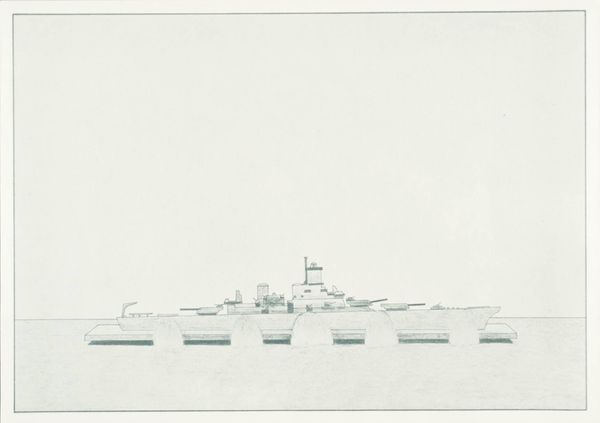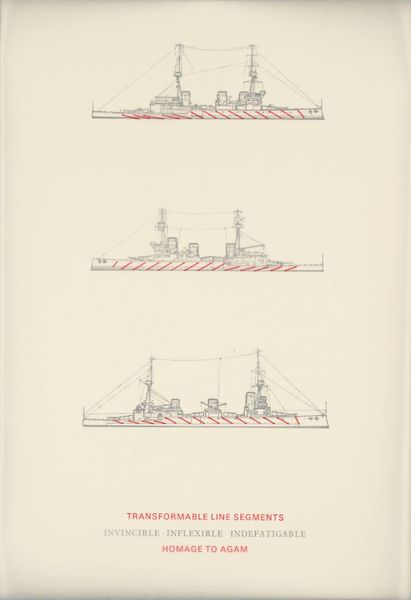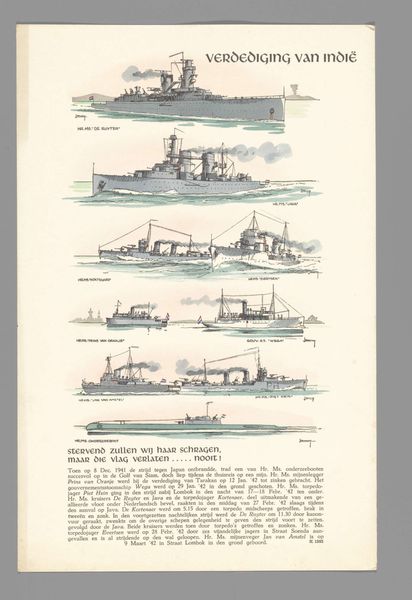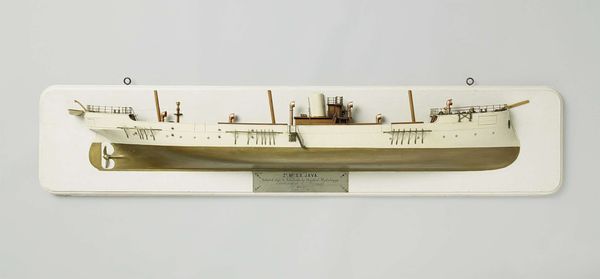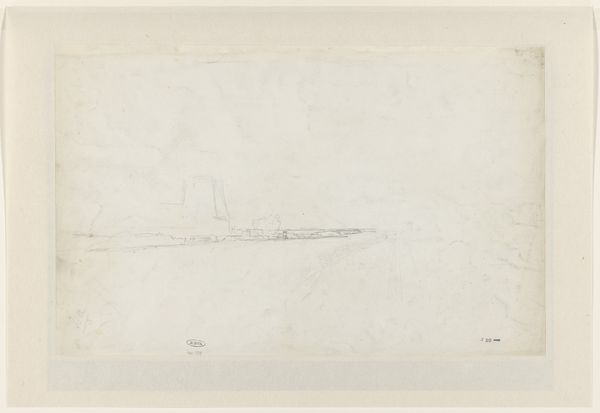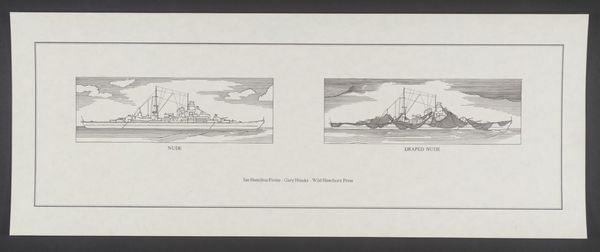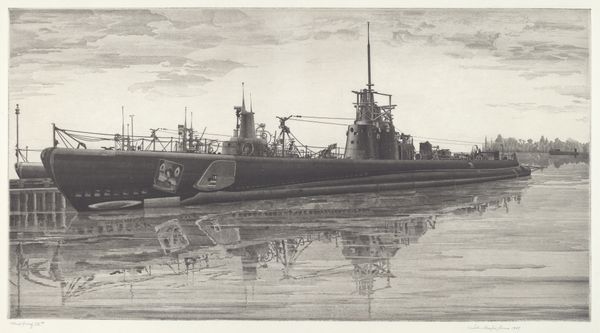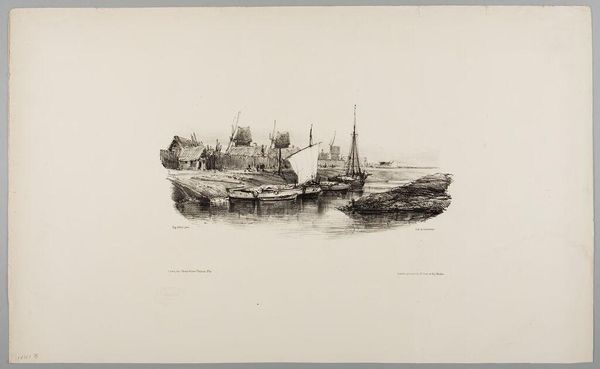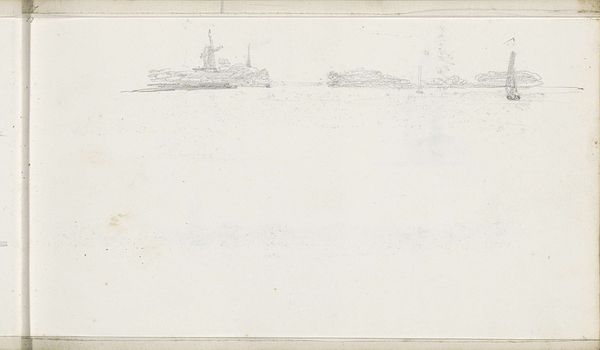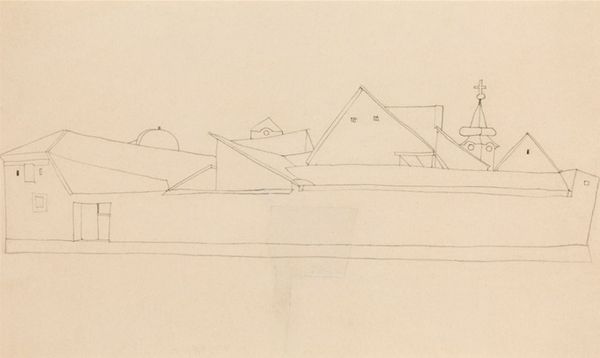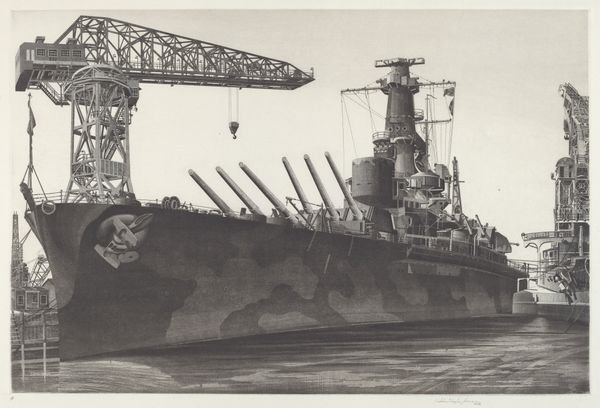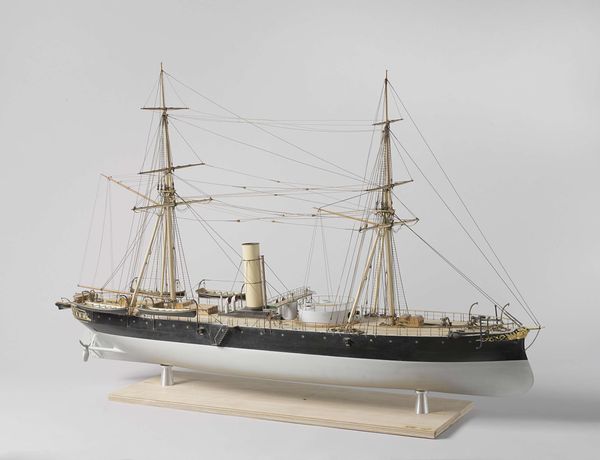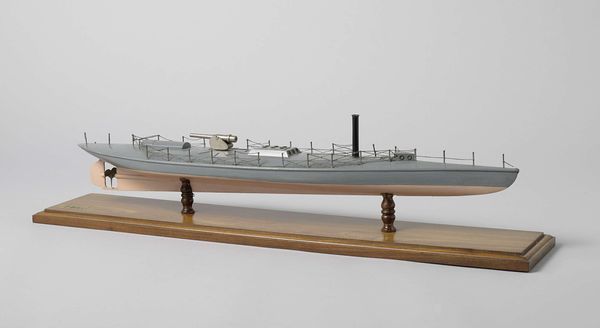
Dimensions: image: 330 x 455 mm
Copyright: © Estate of Ian Hamilton Finlay | CC-BY-NC-ND 4.0 DEED, Photo: Tate
Editor: This is Ian Hamilton Finlay's "Prinz Eugen," a print from the Tate collection. The stark, linear depiction of the warship against the pale blue background is quite striking. What formal qualities stand out to you in this work? Curator: The economy of line is paramount. Notice how Finlay reduces the warship to its most essential structure. It is not merely representational; the artist employs the ship’s form as a sign. Editor: A sign of what, precisely? Curator: Perhaps of power, of industrial might. But also of a kind of cold, geometric beauty, wouldn't you agree? Editor: I do, now that you mention it. It's as though the ship's function is almost secondary to its pure form. Curator: Precisely. The visual weight is meticulously balanced, lending the print a feeling of austere, controlled energy. Editor: Thank you. It certainly gives me a new perspective on the piece.
Comments
tate 7 months ago
⋮
http://www.tate.org.uk/art/artworks/hamilton-finlay-prinz-eugen-p11932
Join the conversation
Join millions of artists and users on Artera today and experience the ultimate creative platform.
tate 7 months ago
⋮
The Prinz Eugen was a German battleship, the only heavy cruiser in the fleet to survive the Second World War intact. Its most significant engagement took place in May 1941, in the north Atlantic near Iceland, when Prinz Eugen and Bismarck sank the British battle-cruiser Hood. In a typical piece of wordplay, Finlay connects the battleship to another Eugen: the Swiss poet Eugen Gomringer, who is one of the founding figures of concrete poetry. Gallery label, April 2005
